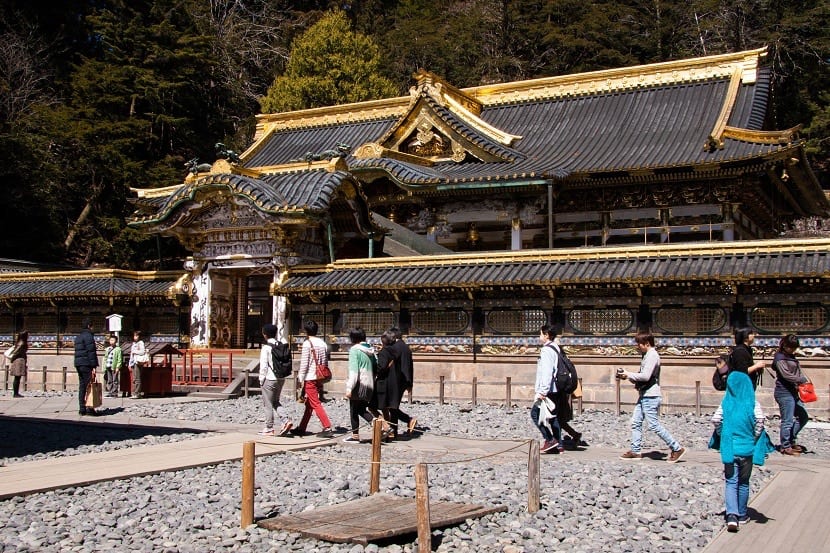
Today I want you to have the opportunity to discover one of the most famous Asian sanctuaries thanks to its great acquaintances the 3 wise monkeys. We arrived in the city of Nikko in Japan to visit the Toshogu Temple.
Without a doubt, if you want to travel to Japan, you will not be able to forget to visit this wonderful temple that will teach you great truths about life and just contemplating it will not make you remain indifferent.
More than 350 years
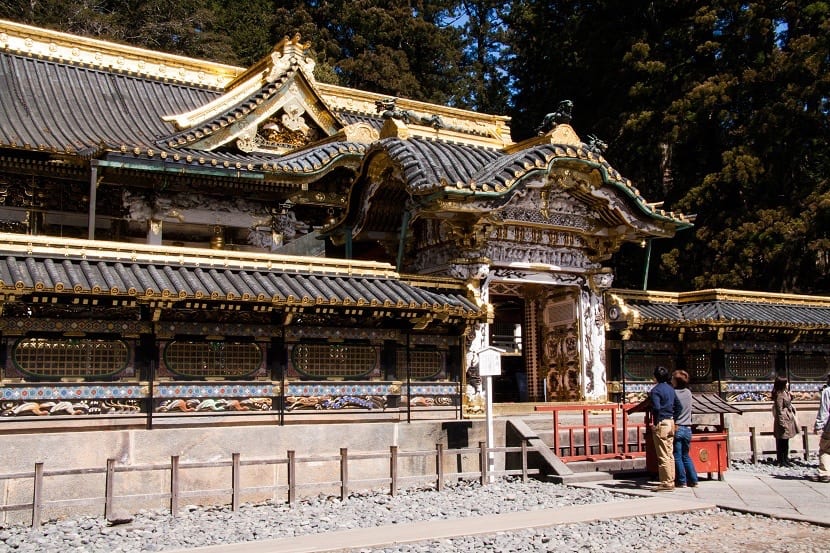
This ancient temple dates back more than 350 years, to be exact it has 382 years standing as it was built in the Edo period (also known as the Tokugawa stage). It is interesting to know that this building was made in honor of the first shogun (military and ruler) Ieyasu Tokugawa, precisely to commemorate his death. Who had the initiative to implement this mausoleum? Well, Iemitsu, Tokugawa's grandson, was thus offering his grandfather a great honor and furthermore, he would be forever remembered, and he is!
It is a national treasure of Japan
The Toshogu Temple, considered a national treasure of the country, keeps inside a sculpture of The 3 Wise or Mystic Monkeys that teach us much more than meets the eye just by looking at them.
During your visit you will be able to observe this sculpture where these three monkeys cover their eyes, ears and mouth with their hands. Surely on many occasions you have seen this image because it has traveled the whole world in countless moments and now with social networks, much faster and faster.
The three monkeys of the temple
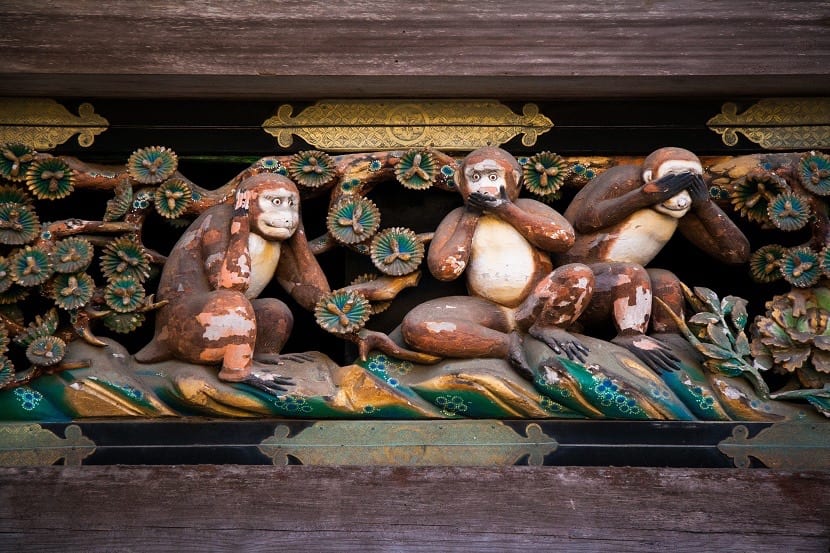
Did you know that this sculpture represents the concept of denial? Yes, it is not very difficult to interpret it, you just have to analyze the image a little and we can realize that implicitly these 3 monkeys are telling us: Mizaru ("I do not see"), Kikazaru ("I do not hear"), and Iwazaru ("I do not speak"). But what exactly do these three cute monkeys mean? They have two interpretations that will undoubtedly make you think about how you currently live life and what is the best thing you can do:
- Deny evil. These three little monkeys, according to Japanese tradition, want to tell us that we must refuse to listen, see and say evil things. Without a doubt, a wise vision of reality because only in this way can we find inner peace and peace with others, something essential for us to be happy with each other!
- Do not be afraid. Another consistent interpretation that we must not ignore is what these three animals represent: the avoidance of absolute fear. How? Not seeing, not hearing, not saying. Japanese culture is always very interesting.
Toshogu temple
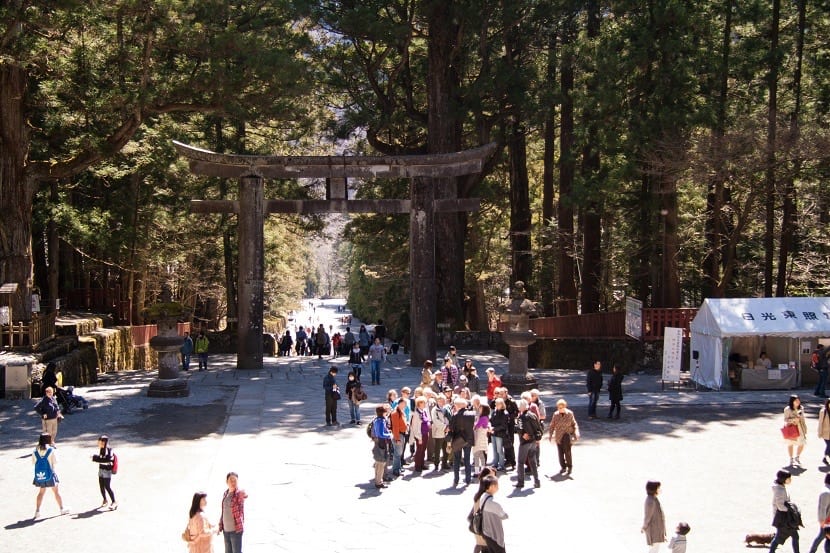
Let's keep talking about the Temple itself. It is important to emphasize that the architecture of the temple is quite particular because it mixes the Buddhist style, that of the native Japanese religion Shinto and Stupa (type of architecture to contain relics and funerary objects). We also recommend that you bring a camera to capture images of the colorful buildings and garish ornaments… because you will like to be able to look at them again and show them to your friends and family once you have left the venue.
The entrance to the Toshogu Temple is through the main door which is a traditional Japanese bow named as Tori. In this way, the border between the profane and the sacred is marked, something very important to be able to feel the greatness of the place just by entering.
We must not be architects to notice that the structure is quite symmetrical and that opaque vertical rectangles have been used inside to define the spaces.
We also inform you that a great celebration is taking place here: "The Great Toshogu Festival". It is a huge procession where you can see people dressed as samurai, something that can certainly be very interesting to see. If you want to attend you must visit the place on May 14, because it is the day of the celebration of this festival.
Other curiosities worth knowing
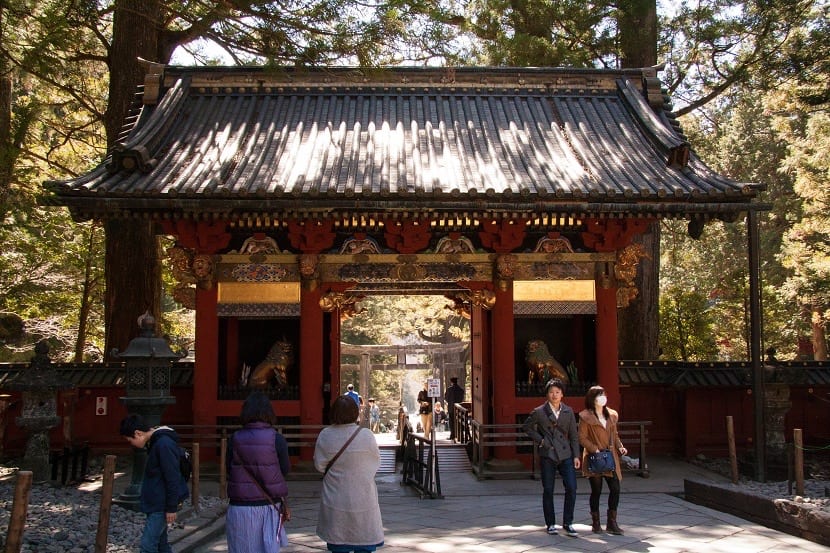
Toshogu Temple is also known as a Shinto shrine which is dedicated to the kami of leyasu (the spirit of leyasu) who died in 1616 and founded the Tokugawa shogunate, a military dynasty that ruled Japan between 1603 - 1867.
15.000 artisans were needed
To create the sanctuary that was to be worthy for the shogun, it took 15.000 craftsmen who worked for two years with no less than 2 million sheets of gold leaf. The consecration of the spirit of leyasu is recreated twice a year in the procession of the Thousand Warriors.
It is characterized by its exuberant architecture
Unlike other Shinto shrines that are characterized by a more minimalist architecture to integrate them into the environment, Toshogu is a riot of color, gold, sizes, birds, flowers, dancing maidens and wise men that are around the building and that it is worth photographing.
All this exuberance is praised by many visitors, they see it as an imposing and very beautiful temple. But since there are colors for tastes, there are also other people who think that it is something vulgar and that it should be otherwise. The reality is that there is a great contrast with the exuberance of the chapel with the Leyasu mausoleum which is simple and austere.
Toshogu's most famous items
One of the most famous elements of the temple is the one that I have mentioned above about the three wise monkeys, but that's not all, there is also the sacred stable where an imperial white horse is kept (gift from New Zealand). Another famous item is a sleeping cat and a representation of an elephant but it doesn't really look like an elephant.
Buddhist elements
Although it is a Shinto shrine, the Toshogo temple contains various Buddhist elements such as more than seven thousand scrolls of sacred texts and a formal Buddhist entrance door as well as the presence of two Deva kings.
So do not forget that if you go to Japan you cannot forget to visit this temple to see it first hand. You are sure to love it!
Excellent, I was very interested in knowing the meaning of these three images, the explanation was very clear to me, thank you.